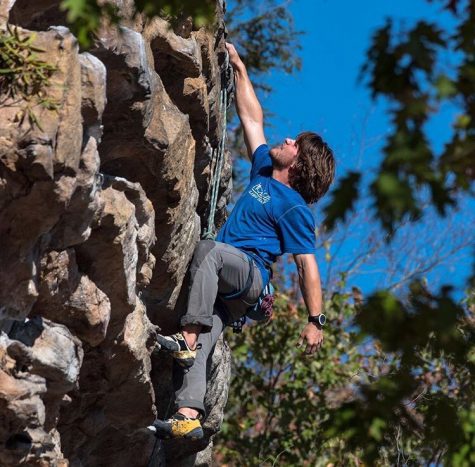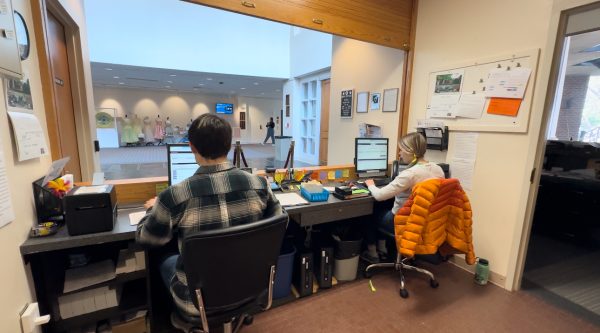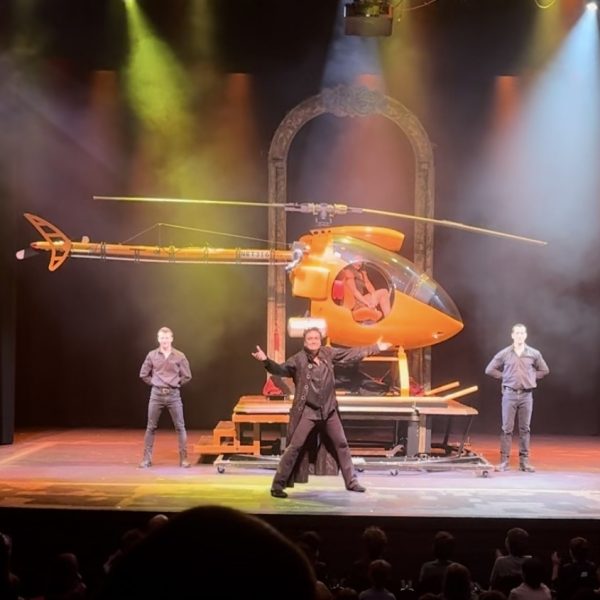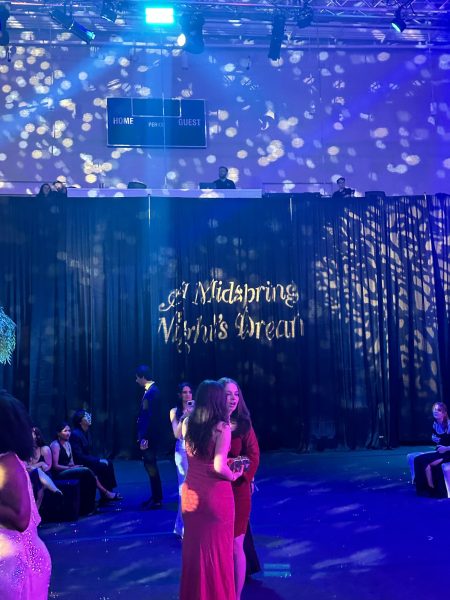Not varsity? For these athletic students, not a problem
From participating in organized club sports to solo events, some students find unique ways to remain active and competitive without being part of a varsity roster
March 26, 2018
Washington and Lee supports 24 varsity athletics programs—with 12 men’s teams and 12 women’s. The university’s small size means that a high percentage of students are athletes representing the Generals at the NCAA Division III level. But a number of students balance school work with competitive athletic pursuits, even if they aren’t officially labelled “student-athletes.”
Rugby
Nicknamed “The Screaming Minks,” the W&L club rugby team has had great success in recent years, winning four straight conference championships. In 2014, the team had one of its best seasons in history, placing third in the national Rugby Challenge Cup finals in Pittsburgh, Pa.
The team functions similarly to a varsity athletic team, returning early in the summer to practice and compete in an organized league called the Cardinal Rugby Conference. Other schools in the conference include James Madison University and Virginia Military Institute.
The team practices three days a week with weekend matches or tournaments. Captain Spencer Alascio,’19, said the team even has an off-season weight training program to stay in shape and get stronger.
Alascio said playing for the Minks has created many great memories for him.
“Outside of academics, rugby has been the single most important part of my Washington and Lee experience,” Alascio said.
Alascio said that because the team is a club sport, almost all of the functions of the team are member-driven; it’s up to the students to figure out funding and schedule practice times on their own. One particular disadvantage is that the team is not allowed to use the university’s athletic training services, which are reserved for varsity athletes.
But Alascio said he doesn’t view himself as any less of an athlete.
“There are very few people who can manage to tackle without pads in an all-out sprint for 80 minutes,” he said. “I would absolutely consider myself and anyone who joins the rugby team to be a student-athlete.”
Alascio said the Minks will continue to have organized practices and focus on their off-season lifting program in preparation for the conference championship.

Rock Climbing
The Crux Climbing Team was founded at W&L in 2012.
Club member William Chapman, ‘20, said the teams has about 30 members. The team practices three times a week using the climbing wall in the Outing Club barn, with competitions in Roanoke either once or twice a semester. The team also holds intersquad competitions under a similar scoring system.
In competitions, individuals score points based on successful completion of a climbing wall in a specific way, using a mapped out route. The walls range in difficulty and more points are awarded for completing more difficult climbs.
Chapman said while competitions are fun, the team works toward gaining skills to climb outdoor mountains. The team goes to New River Gorge in West Virginia twice a semester.
Chapman said these outdoor trips have been a highlight of being on the team.
“I love going outdoors,” he said. “Just getting to go camping, hanging out for a few days and getting sit outside and rock climb all day is fun.”
Chapman said he enjoys the flexibility that climbing has as a club sport as opposed to a varsity sport.
“I think it’s more fun honestly. Because it doesn’t matter how good you are, you can just go do your own thing,” he said. “If you just want to do some stretches and climb a little bit that’s fine, or if you want to do a structured workout, that’s good too. Everyone is going to be supportive either way.”
The team is preparing to tackle more outdoor courses, as the weather improves.
Cycling
Riding for the Team Traveller Cycling Club offers students a way to stay fit and experience scenic views.
Team Traveller was founded in 2016 by Mikki Whittington, ‘20, a former member of the varsity lacrosse team who was seeking an outlet to channel her fierce athleticism. The team competes every weekend from the beginning of Washington Break in February through late April in the Atlantic Collegiate Cycling Conference. Private schools, such as Duke and Johns Hopkins University, also participate in the conference.
Whittington said the team only has about three to four members who ride regularly. One problem the team has run into is that many students don’t have bikes that are suitable for long-distance cycling. She said that students who are interested in the sport but who lack the proper equipment are still encouraged to train in the spin room located above the varsity basketball court in Warner Center.
Whittington said the team doesn’t hold mandatory practices, but she said she tries to stick to a consistent schedule.
“I ride three to six days a week in Rockbridge County from Buena Vista to Goshen Pass to Collierstown,” she said. “Cycling has allowed me to see more of Rockbridge County than most students ever will.”
Whittington said sightseeing is one of her favorite parts about cycling, even beyond Rockbridge County. Cycling events have taken her to places like Louisville, Ky. and Charleston, S.C. She said she also spends a lot of her time training in the mountains of North Carolina.
“On a bike, you can [explore] a city’s downtown scene or you can summit a mountain and look over the valley below,” she said.
Perhaps most importantly at W&L, Whittington said cycling adds a great balance to her life and a break from academic rigor.
“Cycling gives me an outlet for any kind of problems I might be having,” she said. “It helps keep in the mental and physical shape that I need to flourish in school.”
The cycling team will continue their weekly training to prepare for their next competition in Boone, N.C. on April 6-8.
Obstacle Course Racing
Determined to push herself to her limits, Sara Prysi, ‘18, competes in Spartan Races.
Spartan Races are a series of obstacle races ranging from three to 13 miles, in which participants face obstacles that range from climbing over six-foot walls and lugging around wooden logs, to rolling under barbed wire. Normally, the courses include about 25 to 30 obstacles.
Prysi said she was inspired to compete in these types of events as a way to challenge herself.
“It’s about proving that even when your mind thinks you can’t, your body is capable of so much more, and you push through the discomfort with the ultimate goal in mind,” she said.
Prysi said she typically uses CrossFit’s “Workout of the Day” routine to train. She said she has recently been adding long runs and short run intervals to her fitness routine to build up her endurance.
Last November, Prysi competed in a 13-mile, 34-obstacle “beast” course in Spartanburg, S.C. She said it was a special race, seeing as the this course was the most difficult course level available.
Overall, Prysi said competing in Spartan Races has allowed her to defy normal expectations.
“I really like that it proves to myself and others that I’m capable of so much more than you would expect of a 5’2 woman,” she said.
Additionally, Prysi said she enjoys training for the races is because it helps her to relieve the stress that comes from the “daily grind” of being a student.
Triathlons
Competing in triathlons allows Laws Smith, ‘20, a great outlet to remain fit and connect with the likeminded members of the W&L community.
A triathlon is a multi-stage competition that consists of swimming, biking and running. Smith said he became interested in competing in triathlons as way to keep active in college. He said he already had a passion for running and swimming, so he added biking to round out his fitness experiences.
While the university does not have an official club triathlon team, Smith said he has no trouble finding training partners. He said he trains with classmates, professors and even members of the greater Lexington community.
Smith said the collaborative training has been one of the highlights of venturing into the sport of triathlon.
“If I had just done running, I probably would have mostly trained by myself,” he said. “But being able to train [for triathlons] with other people, you meet more people and you get to experience a different side of [the community].”
Smith works out three days a week—with running being his easiest training session and biking being more difficult. He said he hasn’t participated in any races this year, because the weather has been too cold to complete the swimming portion.
Smith competed in his first triathlon during the summer of 2017. The race consisted of 500 meters of swimming, 12 miles of biking and 3.1 miles of running. Smith said he enjoyed the race and liked seeing himself set a goal and accomplishing it.
Smith said one of the best things about training and competing in triathlons comes after the race.
“After every race, I’ll go get a big bag of hot tamales,” he said. “That’s my treat.”
Smith continues to train for his first race of the season on May 6 at Monticello.













